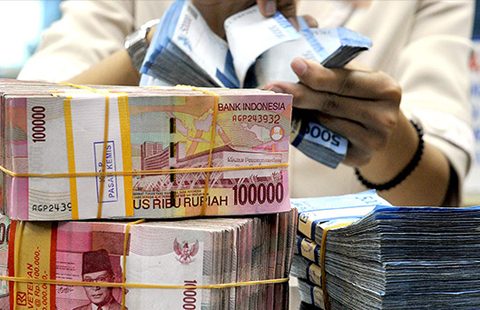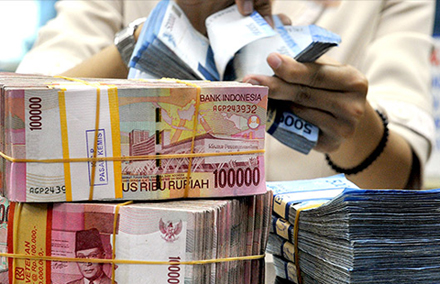While not facing a fiscal emergency, Jokowi has to overcome three immediate economic challenges, write Stephen Howes and Robin Davies.
Indonesia is certainly not facing a fiscal emergency, especially given its low stock of government debt (about 25 per cent of GDP). But it nevertheless faces three serious fiscal problems.
First, its rising fiscal deficit (now close to the legislated cap of 3 per cent of GDP) is symptomatic of strong underlying upward pressure on expenditure not being matched by commensurate revenue growth. Expenditure is above, but revenue is below its long-term average. This poses a long-term threat to sustainability and a shorter-term risk to the macroeconomy, as it will put upward pressure on the current account deficit.
Second, the deficit cap, combined with the government’s inability to control energy subsidies, will crowd out more productive and equitable expenditures – as was seen in Indonesia’s revised 2014 budget, in which there were massive cuts to investment and maintenance to make room for fuel subsidies.
And third, the preference of the Indonesian legislature to set ambitious spending targets not only adds to the two concerns above, but also increasingly limits spending flexibility.
In our previous post in this series based on our August “Survey of Recent Developments” for the Bulletin of Indonesian Economic Studies, we argued that a new approach would be needed to get Indonesia’s enormous energy subsidies under control. Irregular, one-off increases have not worked. A multi-year plan for their elimination is required.
The start of new Indonesian president Joko ‘Jokowi’ Widodo’s first term is the best and perhaps the only time for such a plan to be put in place. However, past experience suggests that reducing Indonesia’s energy subsidies is an extremely difficult task, with uncertain probability of success. A broader approach to addressing Indonesia’s fiscal problems is needed.
Let’s start with expenditure.
The first problem is the growing prevalence of mandated expenditure. The constitution requires that 20 per cent of all expenditure be spent on education; a health law sets a similar, though lower, requirement for health. There is legislation governing how much the central government has to transfer to provinces and districts and now, with the new village law, to villages. Some of these requirements are expressed as a percentage of central government revenue, some as a percentage of expenditure. If the budget were balanced, about 45 per cent of central government revenue would be pre-committed or mandated by law.
To this, we can add interest and subsidy payments – another 35 per cent of revenue if the budget were balanced. These two items are very different in nature, but equally inflexible since they are both difficult to change in the short term.
So, if the budget were in balance, some 80 per cent of expenditure would be either mandated or inflexible. That would only leave 20 per cent of revenue for other needs. And that is nowhere near enough.
That’s of course why the budget isn’t in balance, hasn’t been for some time and won’t be for some time. But allowing the deficit to expand to the maximum allowed under legislation – 3 per cent of GDP – won’t be enough either.
To see this, assume that there is no tax reform, so that the ratio of revenue to GDP is unchanged in 2015 (at 15.8 per cent) and that the deficit is kept at 3 per cent of GDP.
Now consider the policy positions the incoming president will inherit. These include commitments to spend more, in some cases much more, on, among other things: infrastructure, social security, defence and public service salaries. We model the policy commitment to protect and expand these areas by assuming, conservatively, that they grow at the rate of nominal GDP. Other expenditures are allowed to be squeezed, growing only at the rate of inflation.
If we assume also that all legislative and constitutional commitments are met in full, and that there is no subsidy reform, then, under our simulation, total spending expands to 20.5 per cent of GDP, which is 1.7 per cent of GDP greater than the expenditure envelope, given the revenue (15.8 per cent of GDP) and deficit (3 per cent of GDP) assumptions.
What will the new government do?
Some of the legislated spending requirements will be phased in more slowly, but there are other spending commitments that we haven’t taken account of because of a lack of data, such as the introduction of health and unemployment insurance.
Clearly, more revenue is needed, energy subsidies have to be cut and the deficit has to be run at or close to 3 per cent of GDP for some time. On top of all that, tough choices are needed among competing expenditure priorities. Defence and infrastructure might both be important, for example, but Jokowi’s administration will need to decide which is more so.
It will also be important that the new president and parliament desist from any further earmarking of expenditure. They might even consider unwinding some of the existing fiscal mandates, on the basis that the budget should be the instrument for weighing expenditure priorities, not laws considered and passed in isolation.
That might be wishful thinking, but change is needed. Indonesia has in recent years been on a spending spree. Fiscal reform will quickly emerge as an overriding, and not very pleasant, imperative for Indonesia’s new rulers.
Stephen Howes and Robin Davies are Director and Associate Director, respectively, at the Development Policy Centre at The Australian National University. This is the last in a series of three posts on the August edition of the Bulletin of Indonesian Economic Studies, ‘Survey of Recent Developments’. The first post can be found here.
 Facebook
Facebook  Twitter
Twitter  Soundcloud
Soundcloud  Youtube
Youtube  Rss
Rss 
